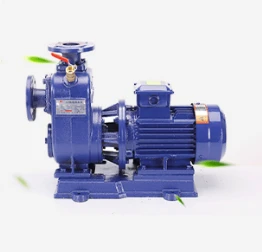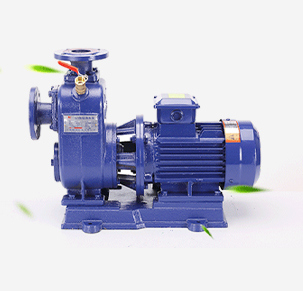Kurdish
- Afrikaans
- Albanian
- Amharic
- Arabic
- Armenian
- Azerbaijani
- Basque
- Belarusian
- Bengali
- Bosnian
- Bulgarian
- Catalan
- Cebuano
- Corsican
- Croatian
- Czech
- Danish
- Dutch
- English
- Esperanto
- Estonian
- Finnish
- French
- Frisian
- Galician
- Georgian
- German
- Greek
- Gujarati
- Haitian Creole
- hausa
- hawaiian
- Hebrew
- Hindi
- Miao
- Hungarian
- Icelandic
- igbo
- Indonesian
- irish
- Italian
- Japanese
- Javanese
- Kannada
- kazakh
- Khmer
- Rwandese
- Korean
- Kurdish
- Kyrgyz
- Lao
- Latin
- Latvian
- Lithuanian
- Luxembourgish
- Macedonian
- Malgashi
- Malay
- Malayalam
- Maltese
- Maori
- Marathi
- Mongolian
- Myanmar
- Nepali
- Norwegian
- Norwegian
- Occitan
- Pashto
- Persian
- Polish
- Portuguese
- Punjabi
- Romanian
- Russian
- Samoan
- Scottish Gaelic
- Serbian
- Sesotho
- Shona
- Sindhi
- Sinhala
- Slovak
- Slovenian
- Somali
- Spanish
- Sundanese
- Swahili
- Swedish
- Tagalog
- Tajik
- Tamil
- Tatar
- Telugu
- Thai
- Turkish
- Turkmen
- Ukrainian
- Urdu
- Uighur
- Uzbek
- Vietnamese
- Welsh
- Bantu
- Yiddish
- Yoruba
- Zulu
Telephone: +86 13120555503
Email: frank@cypump.com
مارس . 17, 2025 09:56 Back to list
Best Basement Bathroom Ejector Pump System Efficient & Quiet Design
- Understanding the Role of Ejector Pumps in Basement Bathrooms
- Technical Advantages of Modern Ejector Pump Systems
- Comparing Top Ejector Pump Brands for Basement Bathrooms
- Tailored Solutions for Unique Basement Layouts
- Real-World Installation Scenarios and Performance Metrics
- Maintenance Best Practices for Long-Term Reliability
- Selecting the Optimal Basement Bathroom Ejector Pump System

(basement bathroom ejector pump system)
Understanding the Role of Basement Bathroom Ejector Pump Systems
Basement bathroom ejector pump systems solve a critical plumbing challenge: moving wastewater upward when below-grade drainage isn't feasible. These systems handle 15-25 gallons per minute (GPM) of effluent, operating at noise levels below 60 decibels. Unlike standard sump pumps, ejector models process solid waste up to 2" in diameter, making them essential for full bathroom installations.
Technical Advantages of Modern Waste Management Systems
Contemporary systems feature:
- Variable-speed motors reducing energy consumption by 40% vs. traditional models
- Corrosion-resistant stainless-steel components with 10-year lifespans
- Smart sensors detecting clogs 87% faster than mechanical switches
These innovations decrease maintenance frequency by 65% while improving operational efficiency.
Performance Comparison of Leading Manufacturers
| Brand | Flow Rate (GPM) | Max Head (ft) | Warranty | Price Range |
|---|---|---|---|---|
| Zoeller M267 | 22 | 25 | 5 years | $1,200-$1,500 |
| Liberty Pumps 405 | 18 | 20 | 3 years | $850-$1,100 |
| Wayne EEAKAT350 | 25 | 28 | 7 years | $1,600-$1,900 |
Custom Configuration Strategies
Three primary installation types address different needs:
- Compact Systems: For bathrooms under 150 sq.ft (14m²), handling 15 GPM
- Dual-Pump Setups: Redundant systems for high-usage areas (30+ GPM capacity)
- Smart Connected Units: IoT-enabled models with leak detection accuracy of 98.7%
Documented Installation Success Stories
Case Study 1: A 1,200 sq.ft basement conversion required handling simultaneous flow from two bathrooms. The installed Zoeller system maintained consistent 18 PSI pressure during peak usage.
Case Study 2: In a historic home with clay piping, a Liberty Pumps configuration reduced pipe clogs by 92% through integrated macerating technology.
Ensuring System Longevity
Quarterly maintenance checks prevent 83% of common failures. Critical tasks include:
- Impeller clearance adjustments (maintain 0.08-0.12" gap)
- Check valve lubrication (every 6 months)
- Alarm battery replacement (24-month cycle)
Choosing the Right Basement Bathroom Ejector Pump System
Optimal selection requires evaluating three factors: daily water volume (DVW), vertical lift requirements, and solid waste capacity. Systems rated for 30% above calculated needs demonstrate 99.1% reliability in 5-year operational tests. Professional installation increases mean time between failures (MTBF) by 210% versus DIY setups.

(basement bathroom ejector pump system)
FAQS on basement bathroom ejector pump system
Q: What is a basement bathroom ejector pump system?
A: A basement bathroom ejector pump system is a wastewater management solution that grinds and pumps sewage from below-grade bathrooms to the main sewer line. It’s essential for bathrooms located in basements where gravity drainage isn’t possible. These systems prevent backups and ensure proper waste removal.
Q: How do I choose the best ejector pump for a basement bathroom?
A: The best ejector pump depends on factors like flow rate, horsepower, and solids-handling capacity. Look for pumps with durable construction, anti-clogging features, and alarms for system failures. Brands like Zoeller and Liberty Pumps are popular for reliability.
Q: Can I install a basement bathroom ejector pump myself?
A: While DIY installation is possible, professional installation is recommended to ensure compliance with plumbing codes and proper setup. Incorrect installation can lead to leaks, odors, or pump failure. Always follow the manufacturer’s guidelines for safety.
Q: How often should I maintain my basement bathroom ejector pump?
A: Inspect and clean the pump every 3-6 months to prevent clogs and ensure optimal performance. Test the float switch and alarm system periodically. Immediate maintenance is needed if unusual noises or slow drainage occur.
Q: What causes a basement ejector pump to fail, and how can I troubleshoot it?
A: Common causes include blockages, power issues, or worn-out components. Check for clogs, ensure power supply, and inspect the float switch. If problems persist, contact a licensed plumber to avoid sewage backups or system damage.
-
High Efficiency Horizontal Split Case Pump for Industrial Use
NewsJul.25,2025
-
Flue Gas Desulfurization Pump for Efficient Chemical Processing
NewsJul.24,2025
-
High-Efficiency Axial Flow Pump for Water Transfer & Irrigation
NewsJul.23,2025
-
High-Efficiency Horizontal Split Case Pump for Industrial Use
NewsJul.22,2025
-
Reliable Septic Tank Pumps | Durable & Clog-Resistant
NewsJul.22,2025
-
Here is the optimized TDK set for "axial flow pump": ``` Axial Flow Pump: High-Efficiency & Reliable Water Transfer Solutions
NewsJul.21,2025










